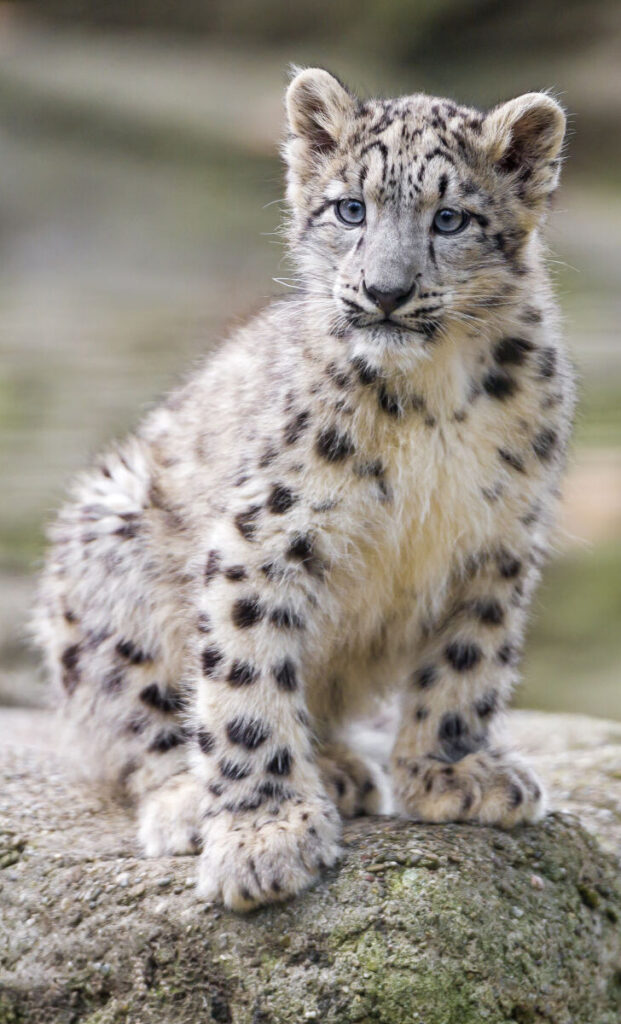Forest, Wildlife & Environment Department Government of Gilgit-Baltistan
SNOW LEOPARD

About Snow Leopard
Snow Leopards are large cats, most active at dawn and dusk. They have white fur coat with brownish/yellow tinges that is covered with rings of brown/black rosette/spots. The markings help camouflage it from prey. Their fur is long and woolly and helps protect the cat from extreme cold. Snow Leopards have heavy fur on their tail and the bottoms of their paws are covered with fur for protection against the cold snow. The Snow Leopard’s head, which has small ears and a distinctive heavy brow, is rounded and comparatively small for their body size. Their long tail helps the cat’s balance as they move over rugged and often snowy terrain. The powerful limbs of the snow leopard are relatively short for their body size and are supported by large, powerful paws.
Key Facts
common name
SNOW LEOPARD
Status
VULNEARABLE
Habitat
COLD HIGH MOUNTAINS
Food
SHEEPS, GOATS & MARMOTS
Tail Lenght
80CM - 100CM
Length
75CM - 130CM
Weight
35KG - 70KG
Age
15 - 18 YEARS
Snow Leopard Features
Physical characteristics:
Snow Leopards are large cats, most active at dawn and dusk. They have white fur coat with brownish/yellow tinges that is covered with rings of brown/black rosette/spots. The markings help camouflage it from prey. Their fur is long and woolly and helps protect the cat from extreme cold. Snow Leopards have heavy fur on their tail and the bottoms of their paws are covered with fur for protection against the cold snow. The Snow Leopard’s head, which has small ears and a distinctive heavy brow, is rounded and comparatively small for their body size. Their long tail helps the cat’s balance as they move over rugged and often snowy terrain. The powerful limbs of the snow leopard are relatively short for their body size and are supported by large, powerful paws.
Habitat and Ecology: Steep, rocky and broken terrain are the preferred bedding areas for Snow Leopards, specifically on or nearby to a landform edge close to natural vegetation. Cliffs and major ridgelines are preferred for daytime resting. Snow leopards live in alpine and subalpine zones. During the summer, the snow leopard inhabits mountainous meadows above the tree line in rocky alpine regions at an altitude of 2,700 to 6,000 m (7500- 17000 ft.). In winter, moves down after its prey to an altitude of around 2000m (5600 ft.). Snow Leopards are opportunists when it comes to feeding. They are strictly carnivores and their prey includes the Ibex, Markhor, Bharal, Marmots and small rodents. Commonly, the cat is a solitary hunter; however, it may share the task with its mate during breeding season. Snow leopards are apex predators, meaning they play a key role in maintaining the biodiversity in an ecosystem. Through population dynamics and trophic cascades, snow leopards are an important indicator of the health of the environment and help regulate the populations of species lower on the food chain.
Threats: Recreational activities, Garbage and solid waste, illegal hunting, human disturbance, habitat loss, and competition for forage with domestic livestock.
Habitat and Ecology: Steep, rocky and broken terrain are the preferred bedding areas for Snow Leopards, specifically on or nearby to a landform edge close to natural vegetation. Cliffs and major ridgelines are preferred for daytime resting. Snow leopards live in alpine and subalpine zones. During the summer, the snow leopard inhabits mountainous meadows above the tree line in rocky alpine regions at an altitude of 2,700 to 6,000 m (7500- 17000 ft.). In winter, moves down after its prey to an altitude of around 2000m (5600 ft.). Snow Leopards are opportunists when it comes to feeding. They are strictly carnivores and their prey includes the Ibex, Markhor, Bharal, Marmots and small rodents. Commonly, the cat is a solitary hunter; however, it may share the task with its mate during breeding season. Snow leopards are apex predators, meaning they play a key role in maintaining the biodiversity in an ecosystem. Through population dynamics and trophic cascades, snow leopards are an important indicator of the health of the environment and help regulate the populations of species lower on the food chain.
Threats: Recreational activities, Garbage and solid waste, illegal hunting, human disturbance, habitat loss, and competition for forage with domestic livestock.
